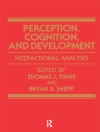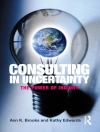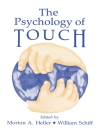This professional text covers every aspect of Autistic Spectrum Disorders (ASD), from science to services, from the most disabling Kanner’s syndrome to the most high-functioning Asperger syndrome, and from birth to old age.
The book contains the latest research on the assessment, diagnosis, treatment, intervention and support of individuals with ASD, and examines their implications at various stages of life. A wide range of neurological, genetic, psychological, developmental, social, and emotional issues are covered, and the author also includes less accessible information on the diagnosis and treatment of associated psychiatric and medical conditions, the overlap between the ASDs and attention deficit hyperactivity disorder, and the management of behavioural and forensic problems. The author does not presume existing technical knowledge and the background to new methods of assessment, such as functional magnetic resonance imaging, standardized clinical and psychological assessment, and genetic testing, is explained.
This book will be an indispensable primary resource for paediatricians, psychiatrists, clinical and educational psychologists, specialist nurses, counsellors, psychotherapists, legal professionals and others working with individuals of all ages who are on the autism spectrum. It will also be of interest to any carers and people with an ASD who want to know about the up to date research into the causes and treatment of the disorder.
Tabla de materias
Acknowledgements. Preface. Why this book. Plan of the book. Stigma. Biological vs. experiential. Limits. Introduction. Future enlargement of the ASDs. The challenge of the ASDs for all mental health professionals. Challenge, and opportunity. Coverage of the book. The brain and developmental disorders. ADHD. Swedenborg’s hypothesis. Could some kinds of ASD be purely psychogenic? Emotional isolation caused by ASD. Can experience sculpt the brain? Epigenesis and learning. The limits of neuroimaging. How clinically useful is a study of the brain? Networks. Emergent properties. Neurodiversity. Other social considerations. Scope and plan of part 2. Part 1. Sciences basic to ASD. Chapter 1. Neurology of the superficial structures of the brain. Right hemisphere. Anatomy. Normal function. Functional effect of lesions in adulthood. Functional effect of lesions in childhood. Structural and functional changes in the ASDs. Parietal cortex. Inferior parietal lobule. Temporal cortex. Anatomy. Normal function. Structural and functional changes in the ADHD and the ASDs. Temporoparietal junction/ parietal operculum. Frontal and prefrontal cortex. Prefrontal cortex. Chapter 2. The cerebellum, and deep structures in the fore-brain. Cerebellum. Anatomy. Function. Functional effect of lesions in animals. Functional effect of lesions in childhood. Structural and functional changes in the ASDs and related conditions. Amygdalae. Anatomy. Function. Functional effect of lesions in animals. Functional effect of lesions in adulthood. Functional effect of lesions in childhood. Structure and function in the ASDs. Cingulate. Anatomy. Function. Functional effect of lesions in adulthood. Structural and functional changes in the ASDs. Insula. Anatomy. Function. Functional effect of lesions in adulthood. Structural and functional changes in the ASDs. Fusiform gyrus. Anatomy. Function. Functional effect of lesions in adulthood. Structural and functional changes in the ASDs. Chapter 3. Interactions in genes and neurons. Single nucleotide polymorphisms. Copy number variants. Haplo-sufficiency. Imprinting and expression. Epigenetic variation. Tandem repeats. Where we are now. Local area networks: minicolumns. Anatomy. Normal function. Working memory networks. Functional networks and fibre tracts. Anatomy. Normal function. Functional effect of lesions in childhood. Functional effect of lesions in adulthood. Structural and functional changes in the ASDs. Functional aggregates, modules, or systems. The default network. Normal anatomy. Normal function. Functional impairment in default network in ASD and ADHD. The anti-correlated, task focussed network. Attention disorders and the anti-correlated networks. Functional disorders of anti-correlated networks and the ASDs. Chapter 4. Developmental, social and emotional considerations. Social factors. In determining whether or not there is a disorder. Advantages to society in ASD and ADHD. Socioeconomic factors and ASD. Ethnic factors and ASD. Social factors affecting the symptom profile of ASD. Social dominance, power and authority. Anger, aggression, and violence. Social factors affecting the quality of life of people with ASD. Cultural factors. The construction of deviant identities. Cultural explanations of the causes of ASD. Normalization. Deviancy theory. Adopting a pathological identity. Acquiring an identity. Family interaction. Chapter 5. Social orientation, communication, and language. Social orientation. Eye orientation. Gaze following. Inference from gaze or movement direction. Imitation. Relevance to ASD. Chunking. Relevance to ASD. Communication. Classical approaches to communication. Linguistics. Digital communication. Design features of a language. The medium and the message. Combinatorial approaches to communication. Two fundamental types of communication. Anatomical approaches to communication. Language, speech, and writing. Anatomy. Development. Normal function. Impairment: speech and language disorder. Developmental speech and language disorder. Articulation disorders. Speech dyspraxia (‘phonological disorder’). Phonological disorders. Speech reading and writing impairment (dyslexia). Relation to ASD. Receptive language disorders (‘specific language impairment’). Prevalence of types of speech and language disorders. Management of speech and language disorders. Chapter 6. Nonverbal communication, empathy and theory of mind. Nonverbal communication. Are all nonverbal communication channels affected in ASD? Orienting attention, salience and interpersonal communication. Recognition of emotional expression. Empathy. Affective empathy. Emotional contagion. Emotional contagion and ASD. Emotional contagion and affective empathy. Self-recognition. Self and other judgements in ASD. Modulating affective empathy. Cognitive empathy. Theory of mind. When theory of mind and empathy conflict. Empathy has to be merited. Empathy modulation. Implications for ASD. Chapter 7. Neuropsychology of ASD. Introduction. Intelligence. Testing. Relation to ASD. Memory. Testing. Relation to ASD. Executive function. Relation to ASD. Working memory. Inhibition of prepotent responses. Attention shifting and attentional maintenance. Repetition and pursuit of sameness: tics, stereotypies, obsessions and compulsions. Motor coordination and topographical orientation. Ataxia. Dystonias and dyskinesias. Dyspraxia. Topographical disorientation. Part 2. Clinical aspects of ASD. Chapter 8. The autistic syndrome. Case history. Differentiating developmental disorder and mental illness. Diagnostic criteria. Setting the scene. Historical preoccupation with language. Practically useful criteria for ASD. External validity of an ASD diagnosis. Autistic syndrome. Dimensions of disorder in ASD. Early recognition of the autistic syndrome. Screening for the autistic syndrome. Red flags. Is screening currently worthwhile? Surveillance. Differential diagnosis. Investigation. Chapter 9. Presentation, prevalence, treatment, and course of the autism spectrum disorders. Presenting symptoms of the ASDs. Attention deficit hyperactivity disorder. Language impairment. Prevalence. Rates of ASD. Rates of specific AS sub-types. Rates of ADHD. Rates in different age groups. Gender differences in rates. Has there been an increase in prevalence? Treatment. Diagnosis. Information. Training. Early intervention. Focussed remediation. Psychoeducation. Dealing with anxiety. Enablement. Sensory integration. Medication. Other interventions that are mentioned in later chapters. Course. False assumptions about course. Social disability does not affect quality of life. Quality of life in people with ASD and their carers. Burden. Conclusions . Chapter 10. Clinical assessment of the ASDs. The goal of clinical assessment. Guidelines. Who makes the diagnosis? The setting for the diagnosis. History taking. Developmental history. Other aspects of family history taking. Structured observation and examination. Nonverbal expression. Nonverbal interpretation. Speech and language. Assessing co-morbidity, associated conditions, social responses, and personal reactions. Prosocial competence. Cognitive style. Specific developmental syndromes. Temperament. Assessment of co-morbid disorder. Psychiatric disorder in the context of ASD. Intellectual disability. Family or relationship factors. Physical assessment. Sleep problems. Impact on sleep of co-morbid disorders. Chapter 11. Aetiology of the autism spectrum disorders. Introduction. Factors present at conception. Biological sex. Heritability. Genetic causes of ASD. Intra-uterine factors. Maternal stress. Placental insufficiency. Hormones and brain development. Infections. Teratology. Perinatal factors. Neonatal jaundice. Postnatal factors. Psychological events. Postnatal conditions having a recognized predilection for the brain. Chapter 12. Presentation in infancy and early childhood (the pre-school years). Relevant developmental challenges. First suspicions of ASD. Red flags. Diagnostic criteria. Illustrative case history. Presenting symptoms. Primary handicap. Secondary impairments. Tertiary disability. Differential diagnosis and associated conditions. Speech and language disorder. Hyperlexia. Attachment disorder. Distinction from intellectual disability. Recognized syndromes associated with ASD often presenting in infancy. Elimination diets. Facilitating collaboration between healthcare providers and carers. Treatment. Issues. Chapter 13. Presentation of Asperger syndrome in middle childhood. Relevant developmental challenges. Play and socializing with peers. Learning challenges. Social demand. First suspicions of ASDs presenting in middle childhood. Asperger syndrome presenting in middle childhood. Red flags of Asperger syndrome presenting in middle childhood. Red flags for ASD. Screening. Illustrative case history Asperger syndrome presenting in middle childhood. Presenting symptoms Asperger syndrome presenting in middle childhood. Primary handicap. Secondary impairments in AS presenting in middle childhood. Tertiary disability Asperger syndrome presenting in middle childhood. Differential diagnosis Asperger syndrome presenting in middle childhood. Obsessive compulsive disorder. Sensitivity. Schizophrenia. Other associated conditions. Causes of ASD. Multidisciplinary involvement. Teacher. Speech and language therapist. Educational psychologist. Paediatrician. Child and adolescent psychiatry team member. Child psychotherapist. Investigations. Intervention. Home-based. Health services. School based. Child-based. Chapter 14. Presentation of Kanner syndrome in middle childhood. Kanner’s syndrome in the context of learning disability. Red flags of Kanner syndrome in the context of learning disability. Diagnostic criteria of Kanner syndrome in the context of learning disability. Illustrative case history of Kanner syndrome in the context of learning disability. Presenting symptoms of Kanner syndrome. Tertiary disability. Investigations. Intervention. Issues. Chapter 15. Presentation of Asperger syndrome in later childhood and adolescence. Relevant developmental challenges. Agency. Identity. Presenting symptoms. Primary handicap. Secondary impairments. Tertiary disability. Diagnosis. Differential diagnosis. Differential diagnosis of communicative disorder. Differential diagnosis of repetitive behaviour. Differential diagnosis of social impairment. Associated problems. Investigations. Management. The primary handicap. Secondary handicap. Tertiary handicap. Issues. Normalization and mainstream education. Chapter 16. Presentation of atypical Asperger syndrome, often with ADHD, in late childhood and adolescence (secondary school and college). Relevant developmental challenges. Belonging, giving, and taking. Self-control. Who are the atypical group? Red flags. Screening. Illustrative case history. Diagnosis. Presenting symptoms. Primary handicap. Differential diagnosis. Associated problems. Aetiology. Investigations. Treatment. Issues. Victimization. Chapter 17. The presentation and consequences of Asperger syndrome in adulthood. Challenges in assessing adults. Relevant developmental challenges. Asperger syndrome in adulthood. Illustrative case history. Illustrative case history of a woman. Gender differences. Presenting symptoms. Differential diagnosis. Associated problems. Aetiology. Investigations. Intervention. Issues. Appendix 1. Ethics and ASD. Appendix 2. An example of a pre-interview questionnaire. Subject Index. Author Index.
Sobre el autor
Digby Tantam is Honorary Consultant Psychiatrist and Psychotherapist for Sheffield Health Care NHS Foundation Trust, an Emeritus Professor at the University of Sheffield, and Honorary Senior Research Fellow at the University of Cambridge. He is a chartered psychologist, and a fellow of the British Association of Counselling and Psychotherapy and the United Kingdom Council for Psychotherapy. Educated at Oxford, Harvard, Stanford, London, and the Open Universities, and with a doctorate from the Institute of Psychiatry in London, he started a clinic for adolescents and adults with autism spectrum disorders in 1980 that has continued ever since.












